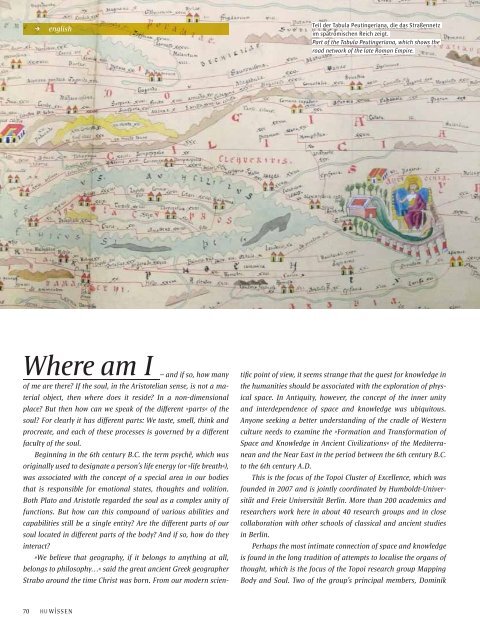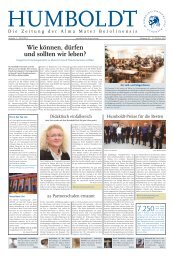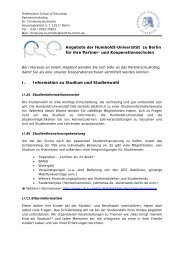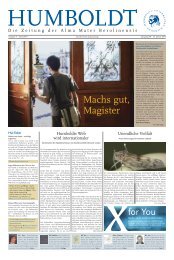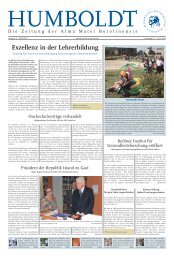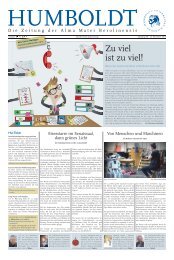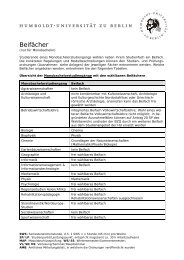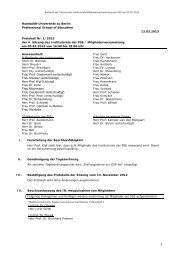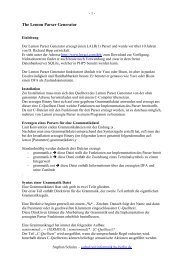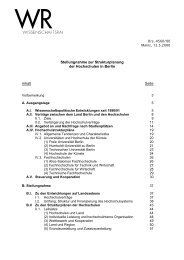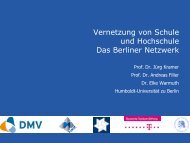hu wissen 3 (pdf) - Humboldt-Universität zu Berlin
hu wissen 3 (pdf) - Humboldt-Universität zu Berlin
hu wissen 3 (pdf) - Humboldt-Universität zu Berlin
Erfolgreiche ePaper selbst erstellen
Machen Sie aus Ihren PDF Publikationen ein blätterbares Flipbook mit unserer einzigartigen Google optimierten e-Paper Software.
k<br />
english<br />
Teil der Tabula Peutingeriana, die das Straßennetz<br />
im spätrömischen Reich zeigt.<br />
Part of the Tabula Peutingeriana, which shows the<br />
road network of the late Roman Empire.<br />
Where am I – and if so, how many<br />
of me are there? If the soul, in the Aristotelian sense, is not a material<br />
object, then where does it reside? In a non-dimensional<br />
place? But then how can we speak of the different »parts« of the<br />
soul? For clearly it has different parts: We taste, smell, think and<br />
procreate, and each of these processes is governed by a different<br />
faculty of the soul.<br />
Beginning in the 6th century B.C. the term psychê, which was<br />
originally used to designate a person’s life energy (or »life breath«),<br />
was associated with the concept of a special area in our bodies<br />
that is responsible for emotional states, thoughts and volition.<br />
Both Plato and Aristotle regarded the soul as a complex unity of<br />
functions. But how can this compound of various abilities and<br />
capabilities still be a single entity? Are the different parts of our<br />
soul located in different parts of the body? And if so, how do they<br />
interact?<br />
»We believe that geography, if it belongs to anything at all,<br />
belongs to philosophy…« said the great ancient Greek geographer<br />
Strabo around the time Christ was born. From our modern scientific<br />
point of view, it seems strange that the quest for knowledge in<br />
the <strong>hu</strong>manities should be associated with the exploration of physical<br />
space. In Antiquity, however, the concept of the inner unity<br />
and interdependence of space and knowledge was ubiquitous.<br />
Anyone seeking a better understanding of the cradle of Western<br />
culture needs to examine the »Formation and Transformation of<br />
Space and Knowledge in Ancient Civilizations« of the Mediterranean<br />
and the Near East in the period between the 6th century B.C.<br />
to the 6th century A.D.<br />
This is the focus of the Topoi Cluster of Excellence, which was<br />
founded in 2007 and is jointly coordinated by <strong>Humboldt</strong>-Universität<br />
and Freie Universität <strong>Berlin</strong>. More than 200 academics and<br />
researchers work here in about 40 research groups and in close<br />
collaboration with other schools of classical and ancient studies<br />
in <strong>Berlin</strong>.<br />
Perhaps the most intimate connection of space and knowledge<br />
is found in the long tradition of attempts to localise the organs of<br />
thought, which is the focus of the Topoi research group Mapping<br />
Body and Soul. Two of the group’s principal members, Dominik<br />
70


